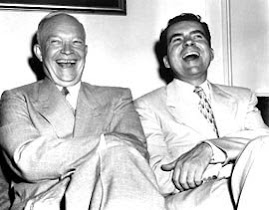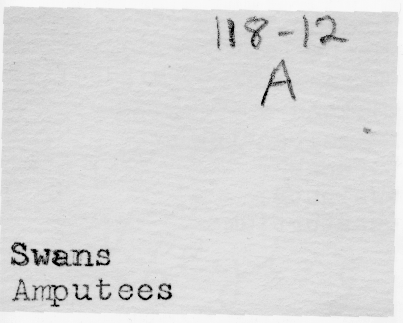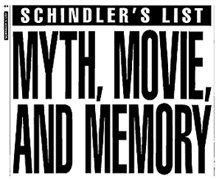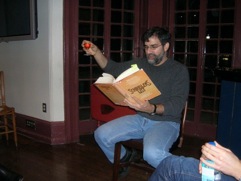 I've just read a pre-publication draft of an essay by Maria Damon on the creative world/work of Jewish-Canadian feminist Kabbalah scholar/poet Adeena Karasick. I've read Karasick's Dyssemia Sleaze (2000) and after reading Damon's inspired, breathless essay I'll buy The Empress Has No Closure if not other books as well. Perhaps Maria D. will ask me not to quote this draft, but I'm so taken by Damon's own lyrical verve here that I can't help myself. She begins by describing Rock n Roll's "Wall of Sound" as "an aural cenotaph for those lost in diasporic lines of frightflight." This takes us to Karasick's major piece in Dyssemia Sleaze, "The Wall," which (obviously) refers to, among other things, the Western Wall (or Wailing Wall) of Jerusalem. To Damon "The Wall" as a poem is itself "a tsunamic wall of words and images bearing down on the reader, a chaotic pile of junk, a roaring whirl." Then there's this phrase, describing the female performance poet: "the (coded-female) reproductive body spew-shpritzing verb-effluence as it it were a bodily fluid."
I've just read a pre-publication draft of an essay by Maria Damon on the creative world/work of Jewish-Canadian feminist Kabbalah scholar/poet Adeena Karasick. I've read Karasick's Dyssemia Sleaze (2000) and after reading Damon's inspired, breathless essay I'll buy The Empress Has No Closure if not other books as well. Perhaps Maria D. will ask me not to quote this draft, but I'm so taken by Damon's own lyrical verve here that I can't help myself. She begins by describing Rock n Roll's "Wall of Sound" as "an aural cenotaph for those lost in diasporic lines of frightflight." This takes us to Karasick's major piece in Dyssemia Sleaze, "The Wall," which (obviously) refers to, among other things, the Western Wall (or Wailing Wall) of Jerusalem. To Damon "The Wall" as a poem is itself "a tsunamic wall of words and images bearing down on the reader, a chaotic pile of junk, a roaring whirl." Then there's this phrase, describing the female performance poet: "the (coded-female) reproductive body spew-shpritzing verb-effluence as it it were a bodily fluid." Much of this is overstated but I take it--and appreciate it--as Damon's attempt as a critic to be a participant in such a radical Jewish experimental poetics, with plenty of cognizance and self-consciousness that she herself, Damon, commits the imitative fallacy. This is indeed, as she puts it, "the danger of 'falling flat' [that is] always present in such specifically corporealized work and [thus] lends it some of its interest--as in (I can only hope) the overload of corny puns with which I tend to freight my essays." Wow, what a shrewd way of anticipating our objection to aspects of this tour de force (not "The Wall" but Damon's essay about it) that indeed fall flat. So why not? It seems to me all part of what Alfred North Whitehead calls a proposition--a "lure of feeling." (Damon herself quotes this phrase.) If the purpose of such an essay is to get me as reader to read more of its subject - Karasick - then it succeeds in a way most essays I've read about relatively unknown contemporary writers fails. Failure, in a sense, is not an option. Worth the risk.
Damon’s apparently whimsical essay on academic affiliation (published years earlier in a book on the academy*), while also interesting in its own right, seems to me most helpful as a provider of context for this critic’s personal intellectual origins. Affiliation is, after all, a function of the individual’s sense of her life-work. That long ago (as a student at Hampshire College) Damon was encouraged (“trained” is actually her word) to think of intellection in terms of “mode of inquiry” rather than “objects of knowledge” goes a long way toward explaining her orientation to process and her insistence on and devotion to self-disclosure. Non satis scire is or was Hampshire's motto: it is not enough (simply) to know. The literary historian of modern and contemporary poetics cannot (simply) describe, especially when she is actively a part of the scene she is describing.
And so I would suggest that Damon's Karasick essay makes emphatic and structurally/formally appropriate a tendency that Damon obviously feels she’s at her best when giving free reign to it. Even her essay on Alan Sondheim's intrusive/disruptive alienating art, for Damon a more academically rigorous critical performance, makes explicit her desire always “to some degree” to be writing essays which are themselves participants in the disjunctive “bricolagarie” (“repeating, quoting, and [self-]interrupting”) that is her main topic.
Adeena Karasick is a wonderful temptation for the critic who thinks of herself or himself as a writer--to cross from critic to poet or, a bit less obviously, to carry criticism across.
* "Memoirs of a Mutable Thoughter," Affiliation: Identity in Academic Culture, ed. Jeffrey R. Di Leo (Nebraska, 2003).






 "I teach horizontally, meaning that while I might begin with a fixed idea of what I'm going to teach that day, I let it drift rhizomatically way off topic, often pulling it back when it gets too far. I rely on non-fixed materials to teach this way; the whole world is at my fingertips. Should I go off on a tangent about John and Rauschenberg and their love relationship as expressed in Rauschenberg's bed, an image of that bed is always a click away. From there, we can head anywhere into the non-fixed universe, be it film, text or sound. And of course, that always takes us elsewhere. As Cage says, 'We are getting nowhere fast.'"
"I teach horizontally, meaning that while I might begin with a fixed idea of what I'm going to teach that day, I let it drift rhizomatically way off topic, often pulling it back when it gets too far. I rely on non-fixed materials to teach this way; the whole world is at my fingertips. Should I go off on a tangent about John and Rauschenberg and their love relationship as expressed in Rauschenberg's bed, an image of that bed is always a click away. From there, we can head anywhere into the non-fixed universe, be it film, text or sound. And of course, that always takes us elsewhere. As Cage says, 'We are getting nowhere fast.'" 

 that anyone has yet got the imaginative measure of that terrifying day six years ago. Certainly our Tolstoy has not crawled out of the rubble. The closest we have, Don DeLillo, succeeded as an essayist-journalist ("In the Ruins of the Future: Reflections on Terror and Loss in the Shadow of September,” Harper’s, December 2001) but, to my mind, failed as a novelist ("Falling Man"). One reason, perhaps, is that the remembered emotion was instantly buried under a pile of cultural junk.' - Tod Gitlin in his review of Susan Faludi's The Terror Dream (written for
that anyone has yet got the imaginative measure of that terrifying day six years ago. Certainly our Tolstoy has not crawled out of the rubble. The closest we have, Don DeLillo, succeeded as an essayist-journalist ("In the Ruins of the Future: Reflections on Terror and Loss in the Shadow of September,” Harper’s, December 2001) but, to my mind, failed as a novelist ("Falling Man"). One reason, perhaps, is that the remembered emotion was instantly buried under a pile of cultural junk.' - Tod Gitlin in his review of Susan Faludi's The Terror Dream (written for 






























